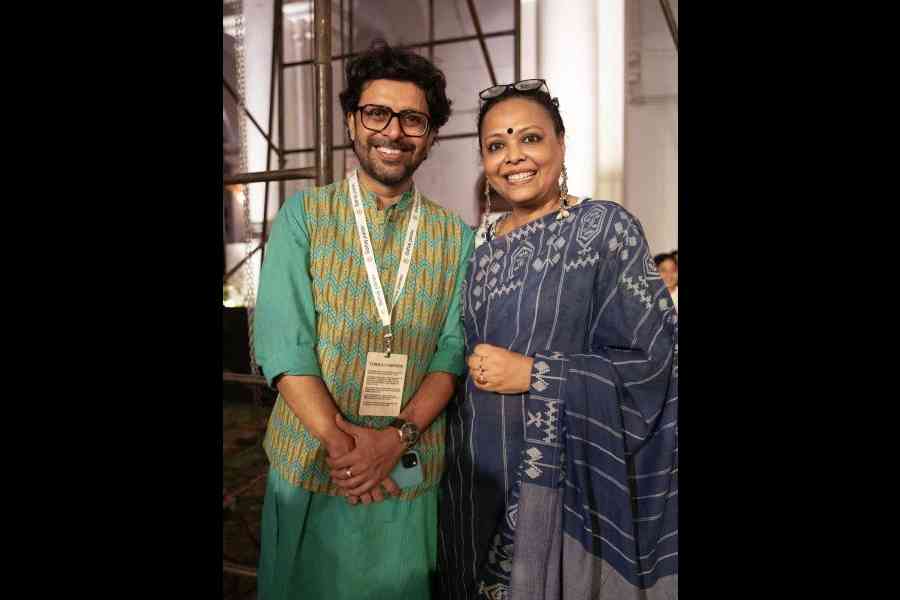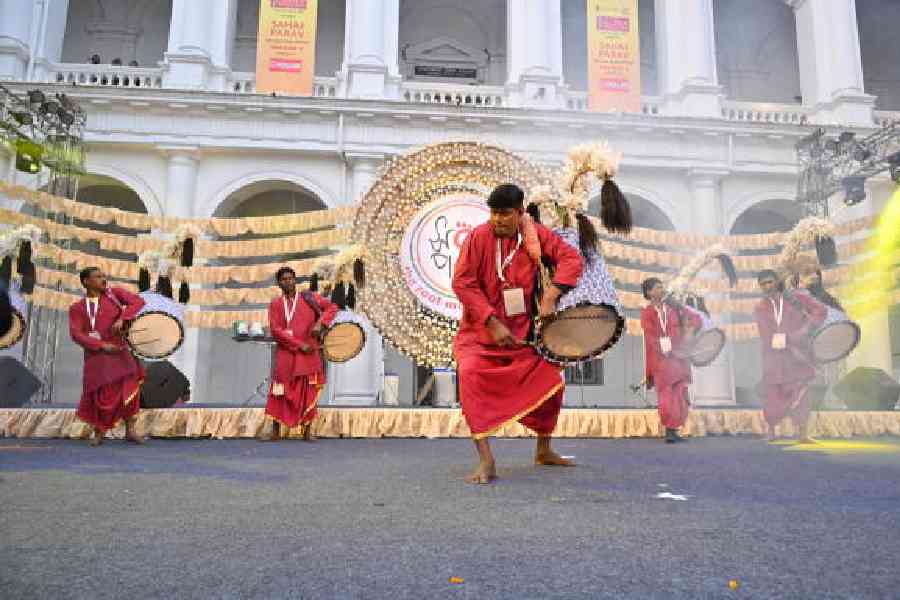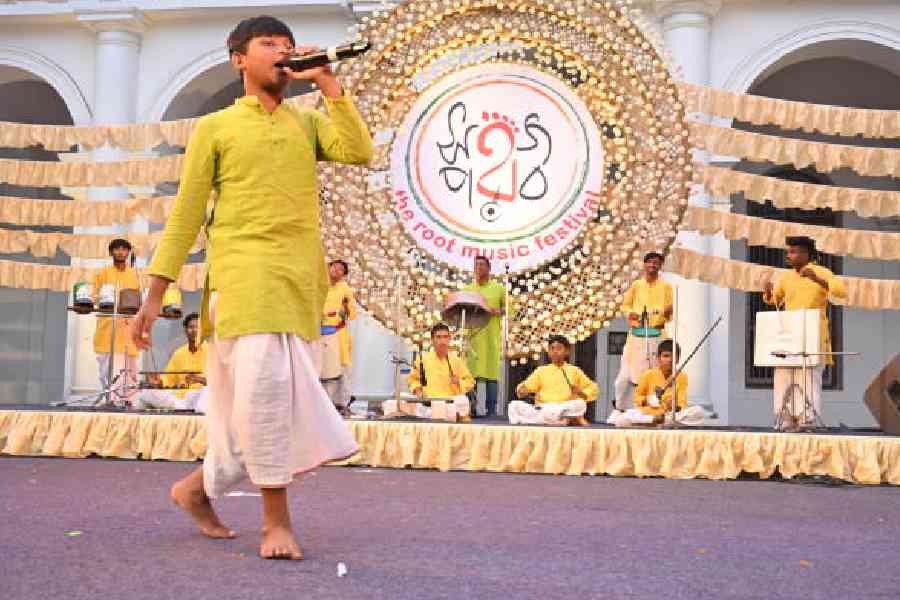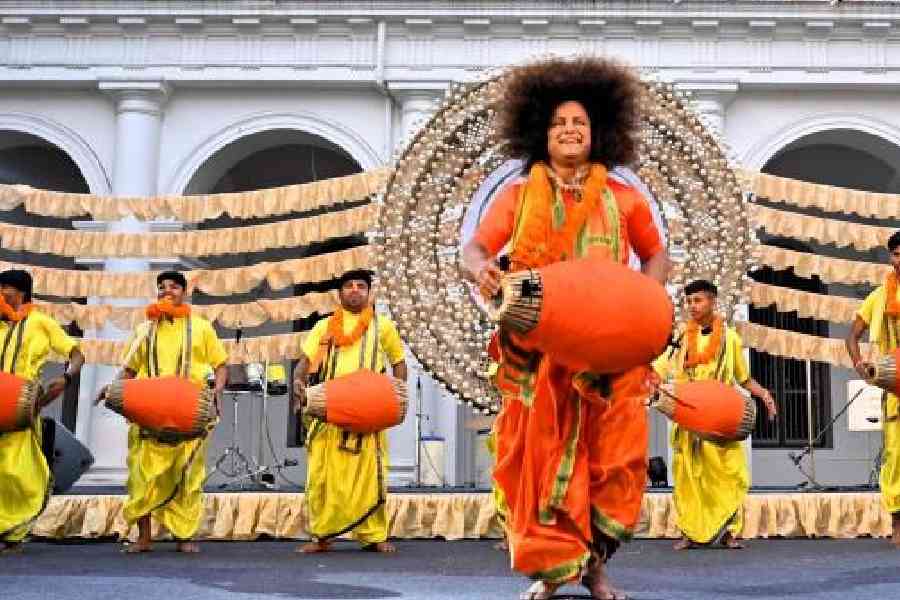The sixth season of Sahaj Parav: The Root Music Festival, was held on February 16 and 17 at the Indian Museum courtyard. It is a unique initiative — undertaken by Lopamudra Productions and Dohar — that aims to showcase a wide variety of folk art and cultural forms in a common space every year. The sixth and latest edition of the event witnessed a diverse range of folk music forms originating from places such as Bengal, Odisha, Rajasthan and Maharashtra. The event began in the evening with an amalgamation of passionate performances featuring Kirtaniyas, Bangla dhakis and young artistes from the city. These were followed by the felicitation of noted folk artiste Anathbandhu Ghosh for his musical contributions and his soulful performance of Geet Govindam. Then young and talented Gotipua dancers from Odisha took the stage, followed by the closing energetic performance of Maharashtrian Gondhali music by Haridas Sindhe and his troupe. The following day witnessed the performance of Bundu Khan and his group of Rajasthani folk music, and notable dance forms such as Chari, Kalbeliya and Kachchhi Ghodi. Finally, Bipul Chettri and his band performed Himalayan folk songs, bringing the event to a close.

“Sahaj Parav aims to connect to the roots. Even contemporary music forms that we showcase have a significant connection to folk and regional roots. Moreover, Sahaj Parav, as the name suggests, strives to bring people together through simplicity, which becomes all the more important as individual lives are getting more and more complex with time,” said organisers Lopamudra Mitra, renowned singer, and Joy Sarkar, renowned music composer.

Following the Kirtaniyas, came the Dhakis who continued to maintain the rhythmic cascade by displaying utmost dexterity in their coordination and performance of syncopated rhythms. “First of all, we are thankful to Rajibda for inviting us to Calcutta. We have come all the way from Murshidabad, and consider ourselves fortunate to have received such a positive response from the city’s audience,” they said.

Following the Dhakis, Sanjay Mandal and his band of young artistes from the city took the stage and performed an astonishing feat by utilising waste products, like discarded tin cans and plastic bottles, as instruments. A young vocalist made everyone sway to his verses.
